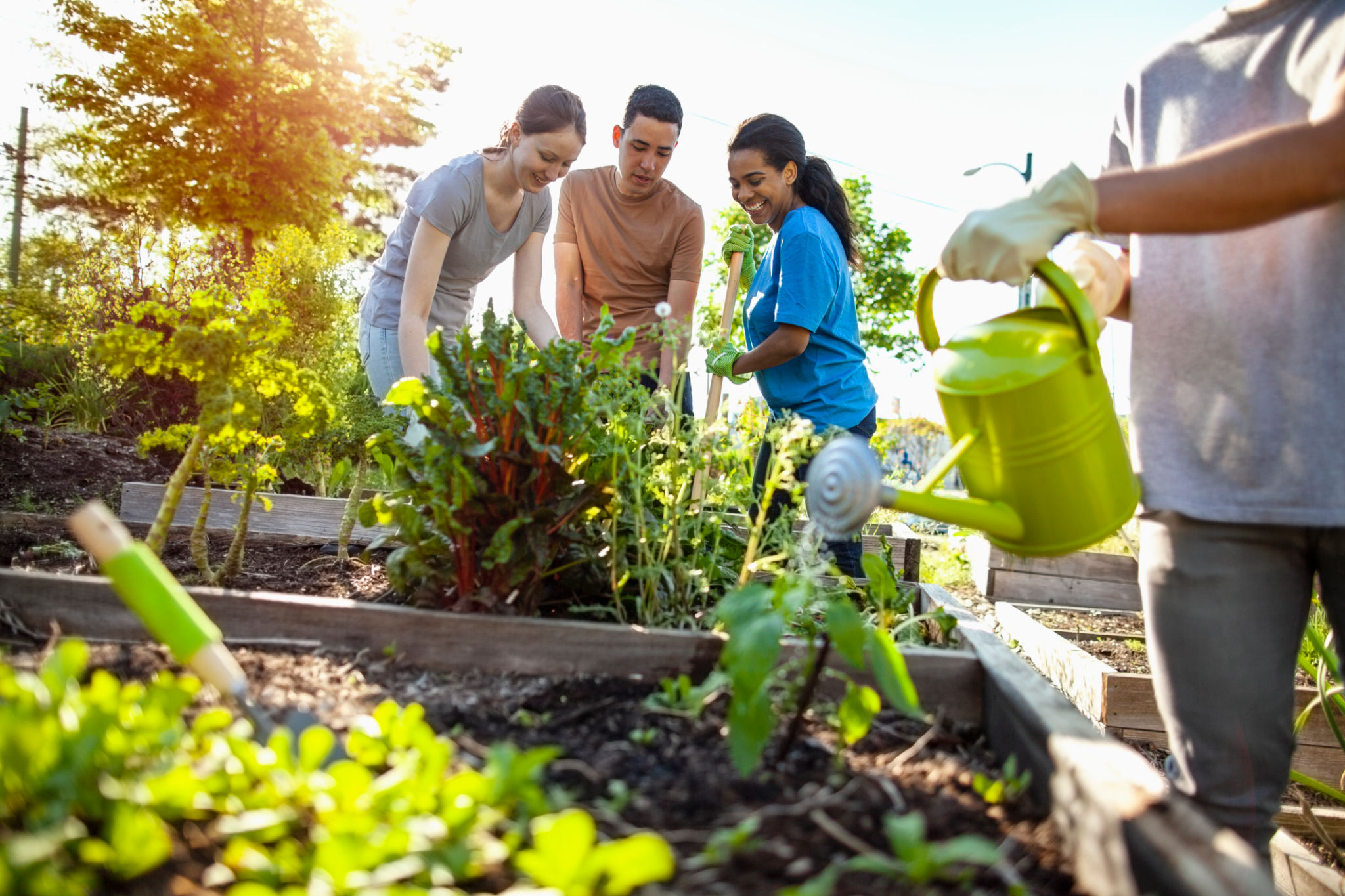How to Design an Edible Garden That Thrives in Urban Spaces
Understanding Urban Space Limitations
Designing an edible garden in urban spaces presents unique challenges due to limited space. However, with a bit of creativity and planning, you can create a thriving garden that provides fresh produce year-round. The key is maximizing every inch of available space while ensuring that plants receive adequate sunlight and nutrients.

Choosing the Right Plants
The first step in designing an edible garden is selecting plants that are well-suited for small spaces. Consider growing compact or dwarf varieties of vegetables and fruits. Herbs like basil, mint, and parsley are excellent choices for urban gardens because they are compact and can be grown in containers. Additionally, plants like cherry tomatoes, lettuce, and radishes thrive in confined spaces.
Utilize Vertical Space
Vertical gardening is an effective way to maximize space in urban environments. By growing plants upwards rather than outwards, you can increase your yield significantly. Trellises, wall planters, and hanging baskets are great tools for this purpose. Climbing plants such as beans, peas, and cucumbers are particularly well-suited for vertical gardening.

Soil and Container Considerations
In urban settings, soil quality can vary greatly, so using containers with quality potting mix is often the best option. Containers allow you to control soil conditions and ensure your plants have the nutrients they need. Make sure to choose containers with adequate drainage to prevent waterlogged roots.
Self-Watering Systems
Consider investing in self-watering planters to simplify maintenance. These systems help maintain consistent moisture levels in the soil, reducing the need for frequent watering. This can be particularly beneficial if you have a busy schedule or live in a dry climate.

Ensuring Adequate Sunlight
Sunlight is crucial for plant growth, but finding a sunny spot in an urban environment can be challenging. Ideally, your garden should receive at least six hours of sunlight daily. If direct sunlight is limited, opt for plants that tolerate partial shade or consider using grow lights to supplement natural light.
Creating a Planting Schedule
To ensure a continuous harvest, plan a planting schedule that takes into account the growing seasons of different plants. Succession planting, where you plant new crops as soon as old ones are harvested, helps maximize productivity and keeps your garden vibrant throughout the year.
Maintenance and Sustainability Practices
Regular maintenance is essential to the success of your urban edible garden. This includes tasks such as pruning, pest control, and soil replenishment. Embrace sustainable practices like composting kitchen scraps to create nutrient-rich soil amendments.

Community Involvement
Engage with local gardening communities or start one yourself to share resources and knowledge. Community gardens can provide additional space and foster a sense of camaraderie among urban gardeners. Plus, sharing surplus produce with neighbors can help build stronger community ties.
Designing an edible garden in urban spaces requires a blend of creativity, strategic planning, and ongoing care. By following these tips, you can cultivate a lush and productive garden that not only beautifies your environment but also contributes to your overall well-being.